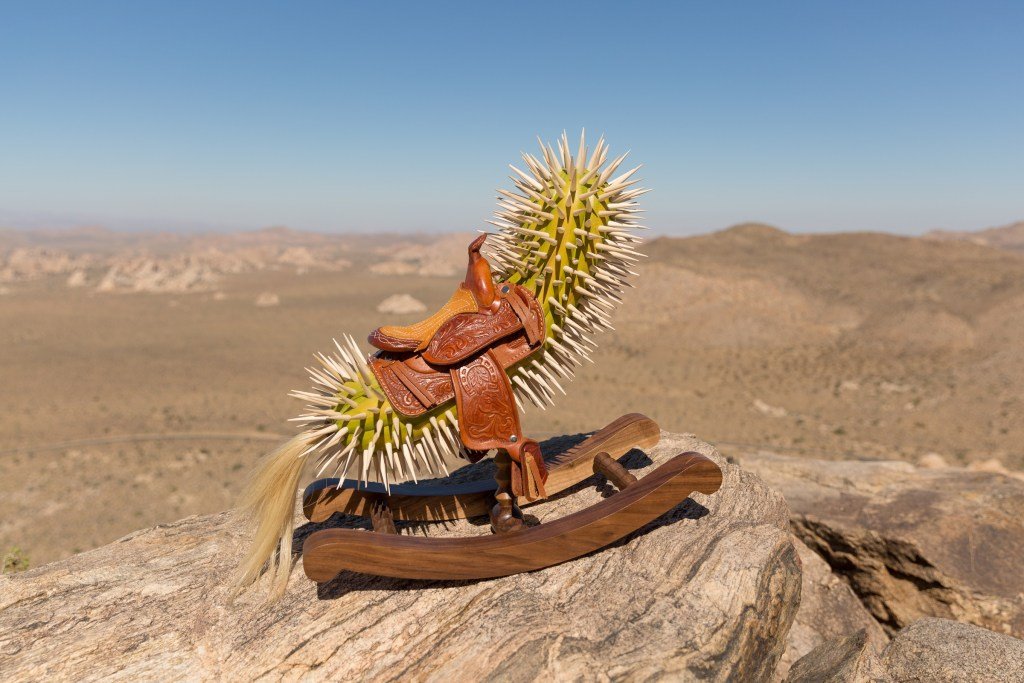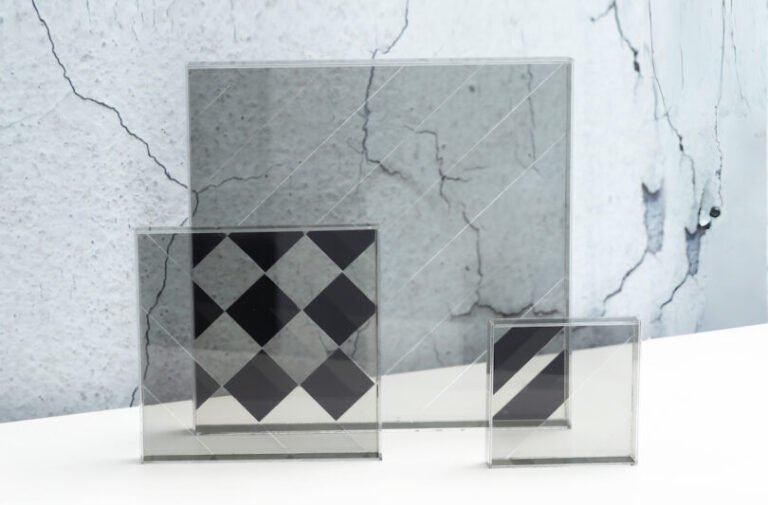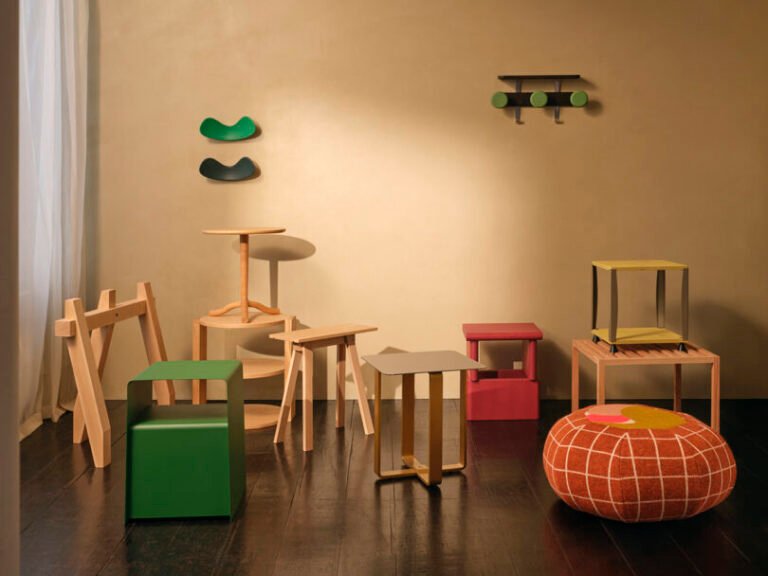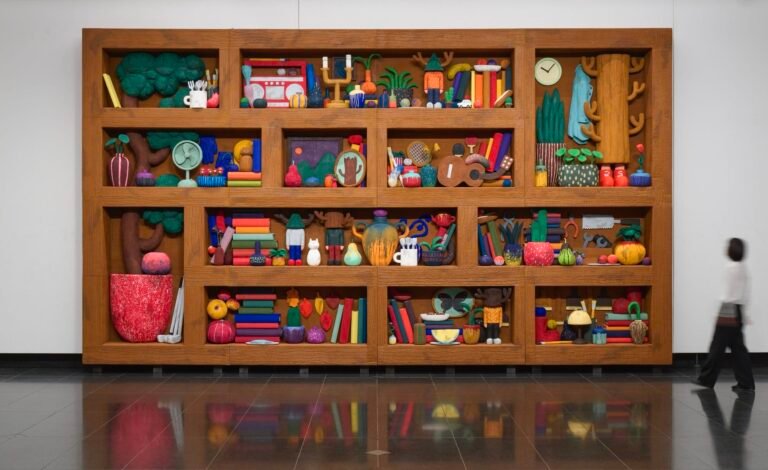

This fall, museums around Los Angeles are showcasing art’s ability to foster community, to rage against injustice, and to rewrite history. A historical survey of Mail Art in Latin America highlights subversive networks of artistic production in the face of political repression, while a traveling exhibition of radical Chicano prints from the Smithsonian lands at the Huntington. A show at the Getty pulls from the Guerrilla Girls’ archive, and a two-person exhibition at Skirball pairs the late Philip Guston with contemporary painter Trenton Doyle Hancock. The timely show Monuments, co-organized by the Brick and the Museum of Contemporary Art, juxtaposes decommissioned US monuments with work by artists engaging with current debates over how we want to reimagine our nation’s history. Ken Gonzales-Day and Tavares Strachan both engage in research-based practices that scrutinize who and what gets written into — and out of — mainstream narratives.
Flesh of the Forest
Oxy Arts, 4757 York Boulevard, Highland Park, Los Angeles
Through December 13

Flesh of the Forest brings together work by nine contemporary Black artists who focus on the forest as a complex site of liberation, danger, history, and boundless possibility. Curated by Tiffany E. Barber, the exhibition features wide-ranging portrayals of the wilderness as a surreal, liminal space where historical realities and speculative fictions coexist. Highlights include Alicia Piller’s maximalist assemblages built from the landscape of LA; Josèfa Ntjam’s video “Matter Gone Wild” (2023) that draws on gaming, mycology, and cosmic exploration; Reuben Telushkin’s kinetic sculpture connecting global struggles for freedom; and Simphiwe Ndzube’s fantastical mixed-media installations rooted in his childhood experience of post-Apartheid South Africa.
Guadalupe Maravilla: Les soñadores
REDCAT, 631 West 2nd Street, Downtown, Los Angeles
September 13–December 19

Guadalupe Maravilla fled his native El Salvador as a child during its bloody civil war, arriving in the US as an unaccompanied child. He later survived cancer, a disease he attributes to the trauma of violence, migration, and his previously undocumented status. Les soñadores, his first solo show in LA, includes sculptures that reflect his personal history of upheaval and resilience. These include “Migratory Birds Riding the Celestial Serpent (Aves migratorias montando la serpiente celestial)” (2021), an undulating serpentine form that incorporates objects picked up on a recreation of his migration path, and “Dream Backpacks” made from volcanic rock, which merge precolonial sculptural precedents with contemporary narratives of diasporic dislocation. REDCAT will host a screening and conversation between the artist, the Dean of the School of Art at California Institute of the Arts Steven Lam, and its own Chief Curator Daniela Lieja Quintanar on September 13 at 6pm.
2025 California Biennial: Desperate, Scared, But Social
Orange County Museum of Art, 3333 Avenue of the Arts, Costa Mesa, California
Through January 4, 2026

This year’s California Biennial features a modest selection of 12 artists and collectives who explore the hope, anxiety, playfulness, and radical spirit of youth. Tracing threads across generations and geography, the exhibition showcases a rebellious DIY attitude grounded in underground, queer, and musical communities. Joey Terrill’s imaginative map “Los Diablos,” begun in 1969 when he was a high school freshman, will be on public view for the first time, while Griselda Rosas presents monster drawings created collaboratively with her child. Deanna Templeton pairs photos of adolescent girls with her own journal entries, Seth Bogart offers cartoonish tributes to girl groups and punk idols, and Stanya Kahn screens her meditative, post-apocalyptic film “No Go Backs” (2020). Despite the rising tide of right-wing autocracy in the US, this show suggests that the kids might be alright after all.
Soy de Tejas: A Statewide Survey of Latinx Art
The Cheech Marin Center for Chicano Art & Culture, 3581 Mission Inn Avenue, Riverside, California
October 4–January 11

Latinx art is far from monolithic, with regional hubs around the country shaped by their specific geographic and cultural milieus. Angelenos may be most familiar with the numerous Latinx artists in Southern California, but Texas has its own Latinx art scenes. Curated by Rigoberto Luna, Soy de Tejas brings together over three dozen artists based or born in Texas, presenting a diverse portrait of Latinx cultural production in the Lone Star State. Highlights include Arely Morales’s monumental portraits of service workers, Patrick McGrath Muñiz’s Renaissance-style depiction of migration, Ruben Luna’s explorations of working-class Mexican-American resourcefulness known as rasquachismo, and Eva Marengo Sánchez’s enchilada still life.
Transgresoras: Mail Art and Messages, 1960s–2020s
California Museum of Photography, 3824 Main Street, Riverside, California
September 13–February 15, 2026

Transgresoras is a historical survey of Mail Art made by Latinx and Latin American women artists from the 1960s to the present day. Mail Art emerged as a way for women artists to work outside of official channels of artistic production, subverting the repressive censorship of authoritarian regimes and regressive gender restrictions. The exhibition features visual poetry, drawings, performance, video, and photography created by an intergenerational group of artists from across Latin America and the US, outlining connections between postal pioneers and contemporary artists inspired by their legacy of correspondence. Participating artists include Gala Porras-Kim, Marta Minujín, Cecilia Vicuña, Carmen Argote, Magdalena Fernández, Carolina Caycedo, Regina José Galindo, and Graciela Sacco.
American Artist | Shaper of God: Apple Valley Autonomy
California African American Museum, 600 State Drive, Exposition Park, Los Angeles
Through March 1, 2026

Shaper of God: Apple Valley Autonomy is American Artist’s tribute to the late science-fiction writer Octavia E. Butler, focusing not just on her fantastical, prescient oeuvre, but also on the familial support that made it possible. The exhibition is the result of the artist’s long-term research into Butler’s archives, comprising over 8,000 objects donated to the Huntington Library upon her death in 2006. Through sculptures and drawings, American Artist explores Butler’s matrilineal history, specifically her relationship to her mother Octavia M. Butler and grandmother Estella, a chicken rancher in Apple Valley, California.
Made in L.A. 2025
The Hammer Museum, 10899 Wilshire Boulevard, Westwood, Los Angeles
October 5–March 1, 2026

The seventh edition of the Hammer’s LA biennial features 28 artists living and working in the City of Angels. Across film, painting, choreography, photography, sculpture, and sound, they capture something of the city’s “cacophonous disorder,” as curators Essence Harden and Paulina Pobocha note. Participating artists include Ali Eyal, Patrick Martinez, Amanda Ross-Ho, Carl Cheng, Gabriela Ruiz, Will Rawls, and Hanna Hur, among others.
Sandra Vásquez de la Horra: The Awake Volcanoes
Institute of Contemporary Art, Los Angeles, 1717 East 7th Street, Downtown, Los Angeles
October 11–March 1, 2026

The Awake Volcanoes marks the first solo US museum show dedicated to the work of Chilean-born artist Sandra Vásquez de la Horra, featuring around 200 drawings, photographs, paintings, and paper sculptures. The artist grew up under the dictatorship of Augusto Pinochet before settling in Germany in the 1990s, and her work often engages with themes of violence, repression, and freedom. In her vibrant and visionary paintings, she draws parallels between the female body and the lands, where bodily forms double as mountains or rolling hills. Drawing on spirituality, myth, and psychological themes, she imagines a hopeful world characterized by perseverance in the wake of trauma.
Draw Them In, Paint Them Out: Trenton Doyle Hancock Confronts Philip Guston
Skirball Cultural Center, 2701 North Sepulveda Boulevard, Brentwood, Los Angeles
October 16–March 1

This show sets up a dialogue between the work of the late Jewish painter Philip Guston and contemporary African-American artist Trenton Doyle Hancock, who cites Guston as a longtime inspiration. The exhibition is anchored by Guston’s infamous Ku Klux Klan paintings, in which he makes cartoon caricatures of the bigots, undermining their menace with satire even as he viewed them as alter egos. Hancock has engaged with both the specter of the Klan and the shadow of Guston in his exuberant paintings, in which he depicts his own avatar, the Black superhero Torpedoboy, alongside Guston’s hooded stand-in. Brimming with humor and sensitivity, the show allows us to thoughtfully consider the complex themes surrounding these works.
Radical Histories: Chicano Prints from the Smithsonian American Art Museum
The Huntington Library, Art Museum, and Botanical Gardens, 1151 Oxford Road, San Marino, California
November 16–March 2, 2026

Spanning six decades and featuring a lineage of 40 artists and collectives, Radical Histories showcases Chicano artists’ use of prints as tools of political protest, solidarity, and cultural engagement. Beginning with prints created in support of striking farmworkers in the late 1960s and the anti-war Chicano Moratorium in 1970, the show includes subsequent generations of artists who have found inspiration in the bold graphics and clear messaging of these iconic works. The Huntington’s presentation of this traveling exhibition features a commissioned mural by LA-based artist Melissa Govea (Purépecha) in collaboration with pioneering print studio Self Help Graphics & Art.
Ken Gonzales-Day: History’s “Nevermade”
USC Fisher Museum of Art, 823 Exposition Boulevard, University Park, Los Angeles
Through March 14, 2026

LA-based artist Ken Gonzales-Day invented the term “nevermade” to refer to invented historical documents that call attention to who constructs mainstream narratives and why. This mid-career survey brings together more than 100 works from the past three decades that look at how race, culture, and identity are portrayed in the US. The show includes his haunting investigation of lynching, Searching for California Hang Trees (2002–ongoing); his series of Decolonial Drawings, recreated period scenes from Spanish colonization with conquistadors and Native people removed; and Profiled, a photographic series that reveals how sculptural busts reflect ideas of race, physiognomy, and purity.
Tavares Strachan: The Day Tomorrow Began
Los Angeles County Museum of Art, 5905 Wilshire Boulevard, Miracle Mile, Los Angeles
October 12–March 29, 2025

Invisibility is a central theme of Tavares Strachan’s multi-faceted practice, specifically as it relates to the erasure of Black figures and experiences from mainstream histories. Operating at the intersection of art and science, he has excavated and shipped a two-and-a-half-ton block of Arctic ice to the Bahamas; created his own space exploration organization, the Bahamas Air and Space Exploration Center (BASEC); and launched a satellite into space dedicated to Robert Henry Lawrence Jr., the US’s first Black astronaut. The Day Tomorrow Began, Strachan’s first museum show in LA, comprises several immersive environments drawing on nature and culture, including a rice field inhabited by clay vessels, a group of figurative bronze sculptures, and selections from The Encyclopedia of Invisibility, his exploration of things unknown and unseen.
Robert Therrien: This is a Story
The Broad, 221 South Grand Avenue, Downtown, Los Angeles
November 22–April 5, 2026

The late artist Robert Therrien is perhaps best known for his monumental sculptures of everyday objects such as tables, chairs, and dishes that navigate between Pop Art and minimalism, with a dash of surrealist whimsy. This is the largest museum exhibition of his oeuvre to date, spanning five decades and featuring more than 120 works, from his signature sculptures to enigmatic drawings that draw on cartoon imagery and geometric abstraction in equal measure. Including many works that have never been shown in a museum before, This is a Story provides a comprehensive look at this quintessentially LA artist who constantly found wonder in the commonplace.
Monuments
The Geffen Contemporary at the Museum of Contemporary Art, 152 North Central Avenue, Downtown, Los Angeles
The Brick, 518 North Western Avenue, East Hollywood, Los Angeles
October 23–April 12, 2026

Rather than representing immutable historical truths about the past, monuments say more about the narratives that civic leaders want to convey at a particular point in time. Co-organized by the Museum of Contemporary Art and The Brick, this exhibition grapples with the heated contemporary discourse surrounding American monuments. Several of these —especially those celebrating Confederate history — have been vandalized or removed in recent years, only for the Trump administration to push for their reinstallation. The exhibition juxtaposes decommissioned monuments from cities including Baltimore, Montgomery, and Richmond with artwork by contemporary artists such as Karon Davis, Cauleen Smith, Kara Walker, and the late Nona Faustine.
How to Be a Guerrilla Girl
Getty Center, 1200 Getty Center Drive, Brentwood, Los Angeles
November 18–April 12, 2026

For four decades, the anonymous collective known as the Guerrilla Girls has been shining a light on sexist and racist inequality in the art world, taking museums and institutions to task with witty posters, public protests, and data visualizations. How to Be a Guerrilla Girl delves into their archive, revealing the collaborative work and planning behind their fusion of art and activism. Alongside historical artwork and ephemera, the exhibition will also feature a new commission at the Getty Research Institute.


